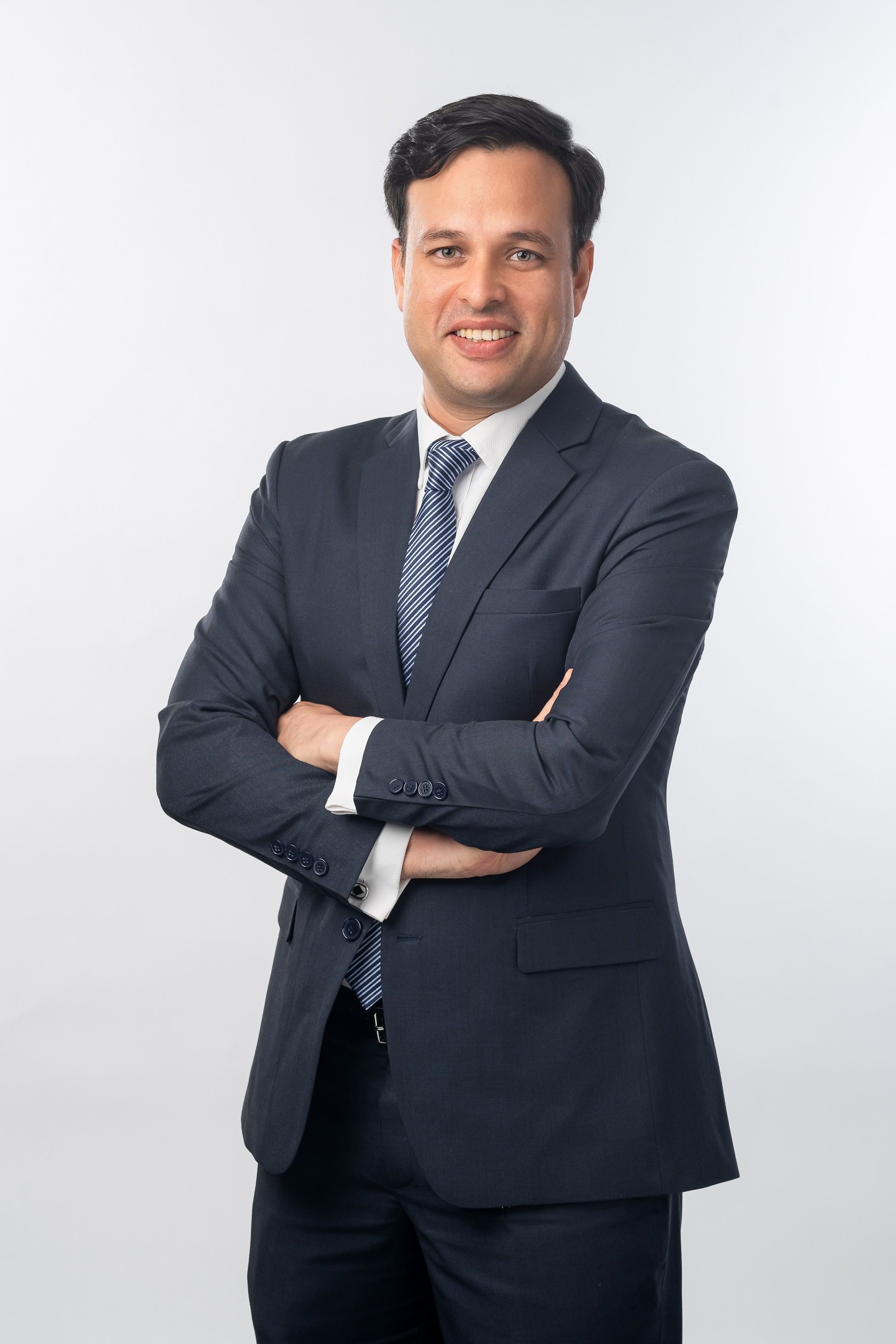-
Internal audit
In today's increasingly competitive and regulated market place, organisations - both public and private - must demonstrate that they have adequate controls and safeguards in place. The availability of qualified internal audit resources is a common challenge for many organisations.
-
IFRS
At Grant Thornton, our International Financial Reporting Standards (IFRS) advisers can help you navigate the complexity of financial reporting so you can focus your time and effort on running your business.
-
Audit quality monitoring
Having a robust process of quality control is one of the most effective ways to guarantee we deliver high-quality services to our clients.
-
Global audit technology
We apply our global audit methodology through an integrated set of software tools known as the Voyager suite.
-
Looking for permanent staff
Grant Thornton's executive recruitment is the real executive search and headhunting firms in Thailand.
-
Looking for interim executives
Interim executives are fixed-term-contract employees. Grant Thornton's specialist Executive Recruitment team can help you meet your interim executive needs
-
Looking for permanent or interim job
You may be in another job already but are willing to consider a career move should the right position at the right company become available. Or you may not be working at the moment and would like to hear from us when a relevant job comes up.
-
Practice areas
We provide retained recruitment services to multinational, Thai and Japanese organisations that are looking to fill management positions and senior level roles in Thailand.
-
Submit your resume
Executive recruitment portal
-
Update your resume
Executive recruitment portal
-
Available positions
Available positions for executive recruitment portal
-
General intelligence assessments
The Applied Reasoning Test (ART) is a general intelligence assessment that enables you to assess the level of verbal, numerical reasoning and problem solving capabilities of job candidates in a reliable and job-related manner.
-
Candidate background checks
We provide background checks and employee screening services to help our clients keep their organisation safe and profitable by protecting against the numerous pitfalls caused by unqualified, unethical, dangerous or criminal employees.

-
Capital markets
If you’re buying or selling financial securities, you want corporate finance specialists experienced in international capital markets on your side.
-
Corporate simplification
Corporate simplification
-
Expert witness
Expert witness
-
Family office services
Family office services
-
Financial models
Financial models
-
Forensic Advisory
Investigations
-
Independent business review
Does your company need a health check? Grant Thornton’s expert team can help you get to the heart of your issues to drive sustainable growth.
-
Mergers & acquisitions
Mergers & acquisitions
-
Operational advisory
Grant Thornton’s operational advisory specialists can help you realise your full potential for growth.
-
Raising finance
Raising finance
-
Restructuring & Reorganisation
Grant Thornton can help with financial restructuring and turnaround projects, including managing stakeholders and developing platforms for growth.
-
Risk management
Risk management
-
Technology & Digital Services
Technology Services
-
Transaction advisory
Transaction advisory
-
Valuations
Valuations
-
Human Capital Consulting
From time to time, companies find themselves looking for temporary accounting resources. Often this is because of staff leaving, pressures at month-end and quarter-end, or specific short-term projects the company is undertaking.
-
Strategy & Business Model
Strategy & Business Model
-
Process Optimisation & Finance Transformation
Process Optimisation & Finance Transformation
-
System & Technology
System & Technology
-
Digital Transformation
Digital Transformation
-
International tax
With experts working in more than 130 countries, Grant Thornton can help you navigate complex tax laws across multiple jurisdictions.
-
Licensing and incentives application services
Licensing and incentives application services
-
Transfer pricing
If your company operates in more than one country, transfer pricing affects you. Grant Thornton’s experts can help you manage this complex and critical area.
-
Global mobility services
Employing foreign people in Australia, or sending Australian people offshore, both add complexity to your tax obligations and benefits – and we can guide you through them.
-
Tax compliance and tax due diligence review services
Tax compliance
-
Value-Added Tax
Value-Added Tax
-
Customs and Trade
Customs and Trade
-
Service Line
グラントソントン・タイランド サービスライン
-
Business Process Outsourcing
Companies, large and small, need to focus on core activities. Still, non-core activities are important, and they need to be leaner and more efficient than most companies can make them sustainably. For Grant Thornton, your non-core activities are our core business. Grant Thornton’s experienced outsourcing team helps companies ensure resilience, improve performance, manage costs, and enhance agility in resourcing and skills. Who better to do this than an organisation with 73,000 accountants? At Grant Thornton we recognise that that outsourcing your F&A functions is a strategic decision and an extension of your brand. This means we take your business as seriously as we take our own.
-
Technology and Robotics
We provide practical digital transformation solutions anchored in business issues and opportunities. Our approach is not from technology but from business. We are particularly adept at assessing and implementing fast and iterative digital interventions which can drive high value in low complex environments. Using digital solutions, we help clients create new business value, drive efficiencies in existing processes and prepare for strategic events like mergers. We implement solutions to refresh value and create sustainable change. Our solutions help clients drive better and more insightful decisions through analytics, automate processes and make the most of artificial intelligence and machine learning. Wherever possible we will leverage your existing technologies as our interest is in solving your business problems – not in selling you more software and hardware.
-
Technical Accounting Solutions
The finance function is an essential part of the organisation and chief financial officer (CFO) being the leader has the responsibility to ensure financial discipline, compliance, and internal controls. As the finance function is critical in every phase of a company’s growth, the CFO role also demands attention in defining business strategy, mitigating risks, and mentoring the leadership. We offer technical accounting services to finance leaders to help them navigate complex financial and regulatory environments, such as financial reporting and accounting standards, managing compliance requirements, and event-based accounting such as dissolutions, mergers and acquisitions.
-
Accounting Services
Whether you are a local Thai company or a multinational company with a branch or head office in Thailand you are obliged to keep accounts and arrange for a qualified bookkeeper to keep and prepare accounts in accordance with accounting standards. This can be time consuming and even a little dauting making sure you conform with all the regulatory requirements in Thailand and using Thai language. We offer you complete peace of mind by looking after all your statutory accounting requirements. You will have a single point of contact to work with in our team who will be responsible for your accounts – no matter small or large. We also have one of the largest teams of Xero Certified Advisors in Thailand ensuring your accounts are maintained in a cloud-based system that you have access to too.
-
Staff Augmentation
We offer Staff Augmentation services where our staff, under the direction and supervision of the company’s officers, perform accounting and accounting-related work.
-
Payroll Services
More and more companies are beginning to realize the benefits of outsourcing their noncore activities, and the first to be outsourced is usually the payroll function. Payroll is easy to carve out from the rest of the business since it is usually independent of the other activities or functions within the Accounting Department. At Grant Thornton employees can gain access to their salary information and statutory filings through a specialised App on their phone. This cuts down dramatically on requests to HR for information by the employees and increases employee satisfaction. We also have an optional leave approval app too if required.
-
 IBR Optimism of Thailand Mid-Market Leaders Suggests Potential Underestimation of Challenges Ahead: International Business Report, Q1 2024Bangkok, Thailand, April 2024 — The Grant Thornton International Business Report (IBR) for Q1 2024 unveils a strikingly optimistic outlook among Thailand's mid-market business leaders, juxtaposed with the looming challenges that will shape the nation's economic future. With a Business Health Index score of 13.5, Thailand outperforms its ASEAN, Asia-Pacific, and global counterparts, signaling a robust confidence that may overshadow critical issues such as demographic changes, skills shortages, and the necessity for digital advancement.
IBR Optimism of Thailand Mid-Market Leaders Suggests Potential Underestimation of Challenges Ahead: International Business Report, Q1 2024Bangkok, Thailand, April 2024 — The Grant Thornton International Business Report (IBR) for Q1 2024 unveils a strikingly optimistic outlook among Thailand's mid-market business leaders, juxtaposed with the looming challenges that will shape the nation's economic future. With a Business Health Index score of 13.5, Thailand outperforms its ASEAN, Asia-Pacific, and global counterparts, signaling a robust confidence that may overshadow critical issues such as demographic changes, skills shortages, and the necessity for digital advancement. -
 Workshop Corporate Strategy and Company Health Check WorkshopThroughout this workshop, we will delve into the life cycle of companies, examining the stages of growth, maturity, and adaptation. Our focus will extend to the current business environment, where your Company stands today, and how our evolving strategy aligns with the ever-changing market dynamics.
Workshop Corporate Strategy and Company Health Check WorkshopThroughout this workshop, we will delve into the life cycle of companies, examining the stages of growth, maturity, and adaptation. Our focus will extend to the current business environment, where your Company stands today, and how our evolving strategy aligns with the ever-changing market dynamics. -
 Tax and Legal update 1/2024 Introducing the New “Easy E-Receipt” Tax scheme with up to THB 50,000 in Tax DeductionsThe Revenue Department has introduced the latest tax scheme, the “Easy E-Receipt”, formerly known as “Shop Dee Mee Kuen”. This scheme is designed to offer individuals tax deductions in 2024.
Tax and Legal update 1/2024 Introducing the New “Easy E-Receipt” Tax scheme with up to THB 50,000 in Tax DeductionsThe Revenue Department has introduced the latest tax scheme, the “Easy E-Receipt”, formerly known as “Shop Dee Mee Kuen”. This scheme is designed to offer individuals tax deductions in 2024. -
 TAX AND LEGAL Complying with the PDPA – A Balancing ActOrganisations must be aware of the circumstances in which they are allowed to collect data to comply with Thailand’s Personal Data Protection Act.
TAX AND LEGAL Complying with the PDPA – A Balancing ActOrganisations must be aware of the circumstances in which they are allowed to collect data to comply with Thailand’s Personal Data Protection Act.

The worst injuries are often the ones that go undetected. In far too many cases, companies that report no fraud are simply unaware of the leakages inside their own area of operations, which tend to be significant in scope. The most recent edition of Report to the Nations: Occupational Fraud, by the Association of Certified Fraud Examiners, estimates that organisations lose 5% of revenue to fraud each year. While the median loss per case is USD 117k, the average loss is an eye-watering USD 1.78 million.
The nature of this problem, however, means that it can be difficult to detect and quantify. Indeed, many associations and organisations conduct studies and surveys in an attempt to establish the cost of fraud for organisations. The findings vary from study to study, and from survey to survey, though they reliably point to vulnerable areas of organisations which are more prone to fraud.
Yet targeting these areas is not so simple. There is no specific or common area where fraud exists, or modus operandi for those involved, as the vulnerable areas of an organisation depend on the nature of its business, as well as its geography and the environment in which it operates. The key takeaway is that fraud is prevalent in almost all organisations. Fraud losses are not restricted to a particular sector or country, and there are multiple points through which the average organisation loses money through fraud.
When we as forensic professionals talk with clients about our services, we often hear from the company leaders or relevant stakeholders that all is well in the business, their controls are working, all risks are monitored, there are zero reports on incidents of fraud, and other such responses. Yet when the same client later approaches us regarding an incident of fraud which the business has witnessed and wants investigated, it turns out that even basic controls are missing.
Why don’t organisations take proactive measures to fight fraud?
The decision of not opting for any pro-active mechanisms of detecting fraud largely boils down to the fact that businesses do not budget for such activities. In such cases, companies also fail to recognise the indirect costs associated with fraud, such as reputational damage and the costs associated with investigation and remediation of the fraudulent acts. The cost of the direct and indirect consequences of fraud is substantial, and additionally include the time and resources spent on investigative and cleanup efforts, as well as other resources that an organisation will dedicate to dealing with the issue, which must be diverted away from its day-to-day work.
The other reason that organisations tend not to proactively fight fraud is that they often expect their statutory auditors and internal auditors to be able to flag irregularities and/or instances of fraud. Simply put, the common expectation regarding auditors is that they will be able to detect and/or prevent fraud.
While auditors doubtless have a role to play in fraud risk management, this is not their primary responsibility. Fraud prevention is the responsibility of company management, as well as those charged with governance of the organisation. In a real-world scenario, neither external nor internal auditors have the expertise of a person whose primary responsibility is detecting and investigating fraud. By contrast, forensic professionals specialise in undertaking investigations which involve interviews, digital forensics, data analytics, and other methods to gather evidence of the existence or non-existence of fraud.
Risks are never constant, but constant monitoring of risks is needed
It is the need of the hour for organisations to change the lens through which they evaluate risks and fraud. Even in organisations that follow corporate governance requirements and general risk management principles, both the causes and effects of fraud are often missed. OFAC guidelines on the topic state: “While there is no one-size-fits all risk assessment, the exercise should generally consist of a holistic review of the organisation from top-to-bottom and assess its touchpoints to the outside world.”
Measures to detect fraud
It is not surprising that organisations consider internal audit as a proactive method to detect frauds. But, as per ACFE’s last report, this method is only second-best. A whistleblowing hotline is the most common method to detect instances of fraud or wrongdoing, though this channel is somewhere in between an active and passive method. Other detection methods include risk assessments, due diligence, management reviews, document examinations, reconciliations, and the monitoring of data and transactions.
In our experience as forensic professionals, we have seen that the monitoring of data and transactions is the least leveraged method amongst the ones listed above. Very few organisations have been able to fully leverage the benefits of proactively monitoring and analysing their data to detect fraud, or to be better prepared for risks which the business is exposed to. While many organisations analyse financial data for various other reasons, such as to gain customer insights, perform cash flow analyses, and project revenue, such activities typically take place in silos. Most organisations do not realise that similar data can also be used to detect patterns of frauds which may be potentially taking place in the organisation, or to produce insights about risk which merit proactive attention before this risk turns into an issue for the organisation.
Combating fraud risk proactively
During their regular assessment processes, organisations across industries go through the cycle of Prevent-Detect-Respond – yet they still experience fraud or other instances of wrongdoing. The reason is that regular risk assessments tend to review only select or key processes, and only in limited ways due to the finite resources available. While it is reasonable to focus efforts on the processes which are more vulnerable or prone to fraud risk, it is best if all risks are explored using a multifaceted approach.
Some of the best ways to identify risk areas involve interviews, brainstorming, questionnaires, process mapping, industry risks, instances observed in the past, and risk observed by peers. Following the use of these methods, it is important to identify data points which are ready to be analysed. Modern technology has made it possible to analyse 100% of this data, unlike the traditional approach wherein only sample data would be reviewed. Transactions which are flagged as outliers (based on the risk identification) can be selected for detailed review. Subsequently, the reviewer can identify the symptoms of fraud and investigate these instances in greater detail.
Getting started
The team at Grant Thornton in Thailand consists of forensic and risk professionals who have multi-sector experience, and a knack for detecting instances of wrongdoing. We can break the process into important sections such as risk and data points identification, smart rules, and industry specific rules and patterns, to help identify instances of wrongdoing.
Our eye for detail lets us gather material evidence from the instances of wrongdoing, and take it to its logical conclusion. We can also suggest pragmatic controls to prevent fraud from occurring in the first place. Contact us today to learn more.


